Dec 14, 2025
Dec 14, 2025
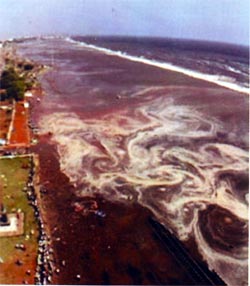 The end of the year 2004 proved to be tragic for many countries in the SE Asia when the Tsunami waves hit, battered and played havoc on the coasts. For the eastern peninsula of our country, especially the states like Tamilnadu, Kerala and Andhra Pradesh the morning of Sunday, the 26th December will go a long way into the history. The tsunamis were triggered by an earthquake of magnitude 9.3 that originated offshore on the west coast of Sumatra.
The end of the year 2004 proved to be tragic for many countries in the SE Asia when the Tsunami waves hit, battered and played havoc on the coasts. For the eastern peninsula of our country, especially the states like Tamilnadu, Kerala and Andhra Pradesh the morning of Sunday, the 26th December will go a long way into the history. The tsunamis were triggered by an earthquake of magnitude 9.3 that originated offshore on the west coast of Sumatra.
This was first time in the history of east coast of our country that aftermath of an earthquake caused misery on such a gigantic scale.
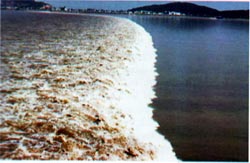 The United States Geological Survey (USGS) has ranked it as the fifth largest earthquake and biggest in past 40 years. The other four being: the magnitude 9.5 1960 Chile earthquake, the magnitude 9.2 1964 Prince William Sound, Alaska earthquake, the magnitude 9.1 1957 Andreanof, Alaska earthquake, and the magnitude 9.0 1952 Kamchatka earthquake.
The United States Geological Survey (USGS) has ranked it as the fifth largest earthquake and biggest in past 40 years. The other four being: the magnitude 9.5 1960 Chile earthquake, the magnitude 9.2 1964 Prince William Sound, Alaska earthquake, the magnitude 9.1 1957 Andreanof, Alaska earthquake, and the magnitude 9.0 1952 Kamchatka earthquake.
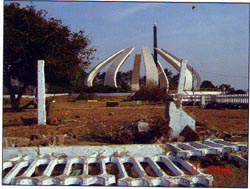 In India the 2004 Tsunami took a toll of estimated 16,000 lives, and 5, 630 people went missing. More than 6, 50000 people were evacuated and 3, 80,000 people became refugees in their own land. A total of 110, 829 dwellings perished under the impact of the Tsunami.
In India the 2004 Tsunami took a toll of estimated 16,000 lives, and 5, 630 people went missing. More than 6, 50000 people were evacuated and 3, 80,000 people became refugees in their own land. A total of 110, 829 dwellings perished under the impact of the Tsunami.
It was one of the fiercest geohazards of the recent years. The trauma was such that even today a slight rumor in the coastal region makes people panic. The long term impact of the tsunami has been on the fishermen, who lost their boats and belongings.
What are Tsunamis, how do they originate and what havoc they can cause are some of the questions that perplex all of us.
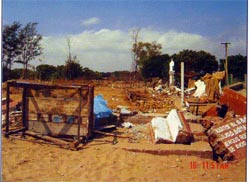 Tsunami is a Japanese term (Tsu = Harbor; nami= waves). The giant sea waves often associated with earthquakes of high magnitude are caused by displacement of water due to large-scale changes of the sea floor. Such changes can be brought about by a volcanic eruption or an earthquake under the sea bed. The displacement of the sea-floor can be of two types. It can either cause a depression in the floor and the sea water is sucked in. Such tsunamis leave the coasts high and dry. If the sea floor is displaced upwards then a large-scale upheaval of the ocean takes place.
Tsunami is a Japanese term (Tsu = Harbor; nami= waves). The giant sea waves often associated with earthquakes of high magnitude are caused by displacement of water due to large-scale changes of the sea floor. Such changes can be brought about by a volcanic eruption or an earthquake under the sea bed. The displacement of the sea-floor can be of two types. It can either cause a depression in the floor and the sea water is sucked in. Such tsunamis leave the coasts high and dry. If the sea floor is displaced upwards then a large-scale upheaval of the ocean takes place.
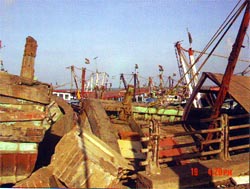 As the sea waves roll out in the form of Tsunamis they gather momentum and travel at great speeds. Sometimes even at a speed of 750 Km an hour. The mighty waves sometimes rise as high as 30 metres. While under the sea the tsunami waves have wave lengths of hundreds of kilometres and travel at speeds of hundreds of kilometres per hour, but they are hardly one metre high. Even the ships passing above are not able to detect the turmoil within the water column. However, these waves carry a great amount of energy and once they reach the shore, jetty or a narrow bay, they become highly destructive. Some times the Tsunamis can carry rocks as heavy as 20 tonnes in their wake.
As the sea waves roll out in the form of Tsunamis they gather momentum and travel at great speeds. Sometimes even at a speed of 750 Km an hour. The mighty waves sometimes rise as high as 30 metres. While under the sea the tsunami waves have wave lengths of hundreds of kilometres and travel at speeds of hundreds of kilometres per hour, but they are hardly one metre high. Even the ships passing above are not able to detect the turmoil within the water column. However, these waves carry a great amount of energy and once they reach the shore, jetty or a narrow bay, they become highly destructive. Some times the Tsunamis can carry rocks as heavy as 20 tonnes in their wake.
Our coastal population is geared up for cyclones and tidal waves but not for tsunamis. That is why the affected states like Tamilnadu, Andhra Pradesh and Kerala were unprepared for such a mishap.
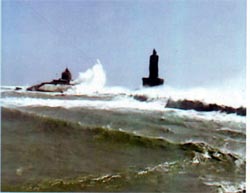 A look at the geological history of tsunamis shows that they have been a part and parcel of the marine eco-system since ages. The crushed and fossilized shells found in the 250 million old rocks of Pahalgam in Kashmir narrate the disastrous impact of tsunamis waves on the ancient marine life in Tethys that lifted them high and then crashed them on the shores.
A look at the geological history of tsunamis shows that they have been a part and parcel of the marine eco-system since ages. The crushed and fossilized shells found in the 250 million old rocks of Pahalgam in Kashmir narrate the disastrous impact of tsunamis waves on the ancient marine life in Tethys that lifted them high and then crashed them on the shores.
Historical records of a catastrophic earthquake that rocked Lisbon in 1755 show that the sea floor was suddenly fissured by the earthquake. The tsunamis that erupted engulfed the habitation. A congregation of people attending Mass in the city Church perished due falling columns and floods.
In 1883 the Krakatau volcano (between Java and Sumatra) erupted. The resulting tsunamis rose as high as 36 metres and swept over the low coasts. As many as 36,000 people perished. Krakatau tsunami was systematically studied and it was found that its speed ranged from 565 to 720 Km an hour. Similarly an earthquake in west Japan in 1933 caused tsunamis unto 27 metre high. These waves were recorded about ten hours later as far as San Francisco. They traversed the Pacific Ocean at 765 Km an hour.
The deep trenches of the Pacific have been a centre for many an earthquakes. Consequently the Japanese coasts have been affected by more than 150 earthquake generated Tsunamis since the systematic recording of earthquakes. It is generally noticed that marine earthquakes with intensity higher than eight on Richter scale are followed by tsunamis.
The earthquake generated tsunamis are unpredictable and in the absence of required sensors it is impossible to forewarn the population of the coastal areas. Sea front is a human weakness. The fishermen are forced to live on the shore as their bread and butter is in the sea. Apart from fishermen, it is common to find posh high rise residential complexes on the sea front. Such areas become prone to hazards like tsunamis.
The devastation caused by the tsunami of 26th December should be an eye opener for the Government and the public alike in the states along the coast. It is a fact that more than 25% of our population lives on the coasts. For the past 5000 years the east coast has been slowly regressing. Thereby more and more land is exposed. Flat land irrespective of hazards is an attraction for people to settle down. The new areas being developed in the coastal towns and metros are slowly inching towards the sea. The respective state governments have to come forward to stop encroachment of the coasts for the safety of their voters.
07-Jan-2007
More by : V. K. Joshi (Bijji)